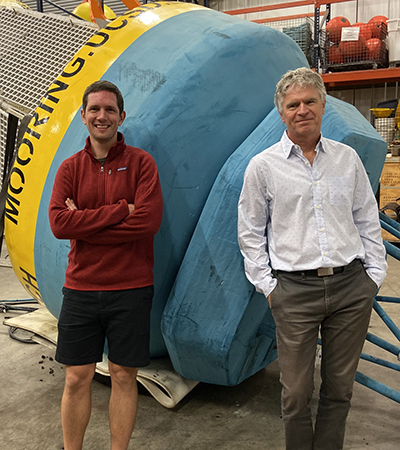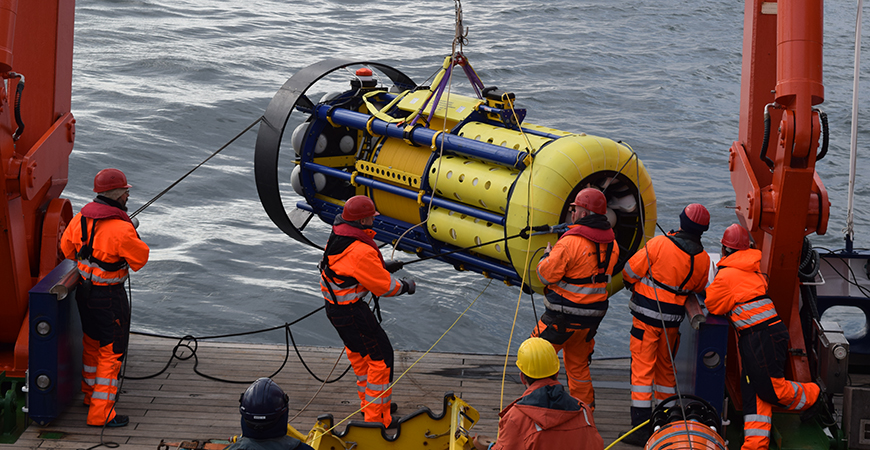
“The SeaCycler was designed to collect sophisticated profiling measurements and carry a very large payload under extreme, very difficult conditions. You really don’t want to be out in the Labrador Sea on a ship, making measurements yourself in winter when these bubble processes are most important,” said Uwe Send of Scripps Oceanography who was also the driving force behind SeaCycler’s development, working closely with engineers at Canada’s Bedford Institute of Oceanography.
Send and his student Jannes Koelling are the two Scripps Oceanography co-authors of the study.
Understanding how much oxygen is transferred is important because deep ocean waters flow out of the Labrador Sea and supply oxygen to a vast area of the ocean, worldwide.
“We often refer to the Labrador Sea as being one of the lungs of the deep ocean and the deep circulation as being like a blood stream,” said Atamanchuk.
Previous research has suggested that the Labrador Sea’s trap door might be closing, mainly due to increasing amounts of fresh water from melting ice on Greenland and the rapidly changing Arctic. “More fresh water means shallower mixing and that would cause the ocean’s breathing to, literally, become shallower,” said Doug Wallace, an oceanographer at Dalhousie who initiated the study.
Atamanchuk added that the effect of closing a similar trap door off Antarctica may already have been felt in the deep South Atlantic Ocean, which has recorded high and otherwise difficult-to-explain levels of deoxygenation over the past 50 years.
“While the details of transfer by bubbles are not fully understood, our measurements show clearly that they deliver massive amounts of gases such as oxygen to the deep sea when the trap door opens around December,” said Wallace. “The importance of this bubble-mediated transfer may have been overlooked and our finding definitely justifies more observation and study in extreme locations like the Labrador Sea.”
The Natural Sciences and Engineering Research Council of Canada; Canada Excellence Research Chair in Ocean Science and Technology; Government of Canada (Canada Excellence Research Chairs Program); National Aeronautics and Space Administration (NASA); National Science Foundation funded the research.
– Adapted from Dalhousie University






修改评论